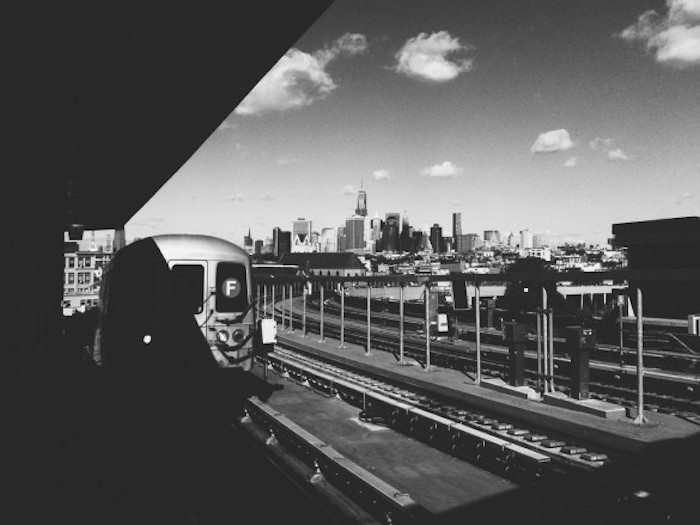Should The MTA Return To City Control? One R Train Rider (& City Council Candidate) Says Yes


Since the temporary closure of the Bay Ridge Avenue and 53rd Street R train stations, subway riders are incensed over what they call insufficient alternatives for passengers.
The 6-month closures in Bay Ridge and Sunset Park are part of a 30-station upgrade that includes Wi-Fi and digital info screens, which some are calling purely cosmetic. “We can all agree that our stations could use some TLC, but people would much rather have their trains run on time than they care about bells, whistles, and wifi,” said Justin Brannan, candidate for the 43rd City Council seat. Brannan called the recent closure of the Bay Ridge Avenue station insulting.
One resident even started a petition demanding extra bus and shuttle bus service from the MTA because, “Bay Ridge commuters already have enough issues with service on the R train (or, as we like to call it, the ‘Rarely’ train),” writes Andrew Gounardes.
Candidates from across the aisle seem to share this outrage — one Monday morning, GOP candidate Liam McCabe got in his car and offered R train passengers rides when shuttle service shut down.
In light of these R train issues, Brannan told BKLYNER that he’s reviving an evergreen political argument to return control of the NYC Subway system to the city itself, not the current state-controlled incarnation of the Metropolitan Transit Authority.
“So far, the Metropolitan Transportation Authority has focused its energy and limited resources mainly on expanding service for wealthy Manhattanites along 2nd Avenue and offering cosmetic fixes like station modernization work and countdown clocks. Meanwhile, fares increase but service on the R Train remains inadequate,” writes the city council candidate.
Under Brannan’s proposal, the two city-only transit systems — the MTA New York City Transit (NYCT) and MTA Bus Company — would split from the MTA’s other sub-agencies that serve Long Island, southeastern New York State, and Connecticut. The subway and bus system would be governed by a board of NYC residents and officials, and chaired by a Commissioner appointed by the Mayor.
Let’s take a brief moment to look back into the MTA’s rocky history. The Metropolitan Transit Authority (MTA) in its current form is a result of many mergers and buyouts. But in a nutshell, the original subway lines, the BMT and IRT, were privately owned, and the city built its own IND line. But in 1940, the city bought out the BMT and IRT to combine three competing lines into one system. After a series of mergers, name changes, and political maneuvering, New York State bought several transit services (including the bankrupt LIRR) and became the Metropolitan Transit Authority in 1968, according to MTA history.
But now, many are calling for city authorities to have a greater say in how the subway system doles out its funds and dictates its service.
“Politicians who represent counties four inches from Canada are being cavalier on underfunding transit because they’ve never ridden the subway before,” said Brannan. “To me, it’s common sense that the city would have more control and more oversight over a subterranean transportation system that only exists in the five boroughs.”
This is far from the first time an idea like this been proposed. John Rozankowski, a proponent of express service, suggested breaking up the MTA and returning governing back to the city. Sheepshead Bay columnist Allan Rosen proposed “appointing some transit users from the outer boroughs to the MTA Board.”
And more recently, Queens City Council Member Jimmy Van Bramer sponsored a resolution to increase New York City’s representation on the Metropolitan Transportation Authority board.
“Nearly 50 years later, riders suffer as the MTA struggles with aging trains, bloated projects and long delays for needed upgrades. Meanwhile, the balance of power at the MTA board rests with Albany and the suburbs, preventing the city from governing its own transit system. Albany’s leadership on the MTA is lacking. It’s time for the city to take control,” writes Van Bramer in Crain’s NY.
But is it really that simple? There are several pros and cons to this evergreen proposal, as documented by writers, technicians, and subway historians — and we’ll just touch on a couple to get the conversation rolling.
The first potential conflict is that it could create regional schisms between the various city and state transit systems (like the Metro-North and LIRR) all under the MTA’s umbrella, argues subway blogger Benjamin Kabak.
The second major issue is funding. In Brannan’s proposal, the funding sources would stay as they are — that is, coming from the State and from riders in the form of fares, tolls, and taxes, since the MTA’s own numbers show that 94 percent of its annual ridership is within the five boroughs. But MTA funding has been a contentious topic between the city and state governments for years (check out this Gotham Gazette article for more info).
“If the people who were voting on funding transit were riding the R train every day, they would have a different take on transit funding,” said Brannan.
What do you think? Has the time come to break up the MTA and give control of the city’s transit back to the city?